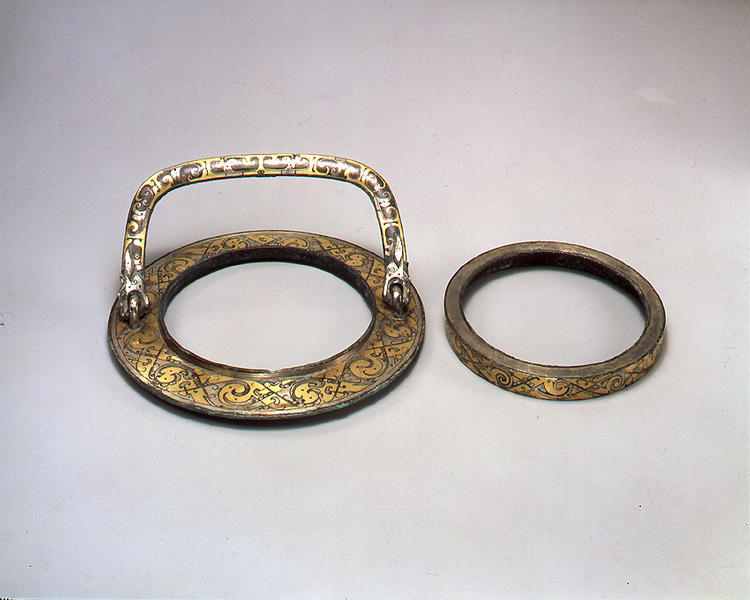Mounts of a Vessel
- China
- China, Late Eastern Zhou or Western Han period
- 3rd to 2nd centuries B.C.
- Bronze with gold and silver foil inlays
- D-19
Catalogue Entry
These two pieces probably formed part of a group of metal mounts for one or more lacquered vessels. The smaller mount, with an L-shaped profile, is likely to have reinforced the rim of a vessel body or its bottom (see cat. no. 104); the larger mount with the handle appears more likely to have been part of the rim or edge of a lid. However, it remains to be determined what type of vessel from the period might have required a mount with such a U-shaped handle. Fitting lacquered wooden vessels with metal mounts was both functional and status-conferring: the mounts protected those parts of the vessel subjected to the greatest wear while serving as symbols of its owner's status.1
Nearly identical patterns of diagonally overlapping scrolls, marked occasionally by scalloped profiles, decorate the flat ring and the L-shaped fitting. The pale yellow gold inlay forms a subtle, painterly contrast with the silver. The patterns parallel designs painted on lacquered wood objects from early second-century B.C. tombs, notably the tomb of the Lady Dai in Changsha Mawangdui, Hunan province.2 A dragon-head at each end of an inverted U-shaped bail handle attaches it to loops on the flat top of the mount. In comparison with the patterns on the mounts, the design of T-shaped scrolls alternating in bright gold and silver on the handle is more sluggish and much simpler in conception. There is, however, no evidence to suggest that the handle, with its different design and color effects, did not belong originally with the mounts.
JFS
1. Wang 1982, p. 84.
2. Hunan sheng bowuguan 1973, pls. 157-59, 162.
